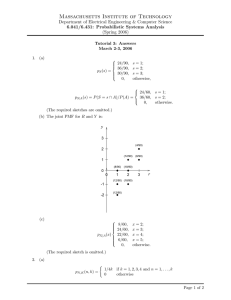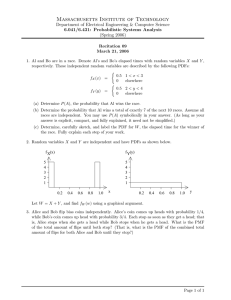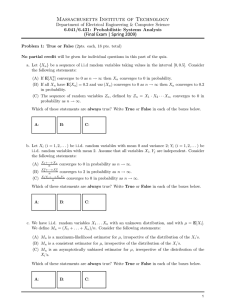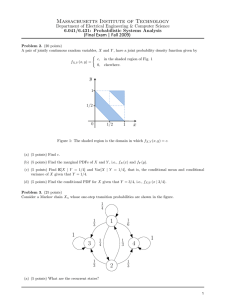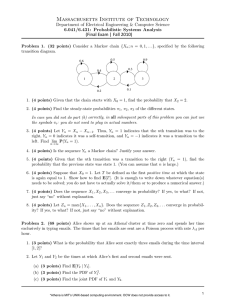Massachusetts Institute of Technology
advertisement
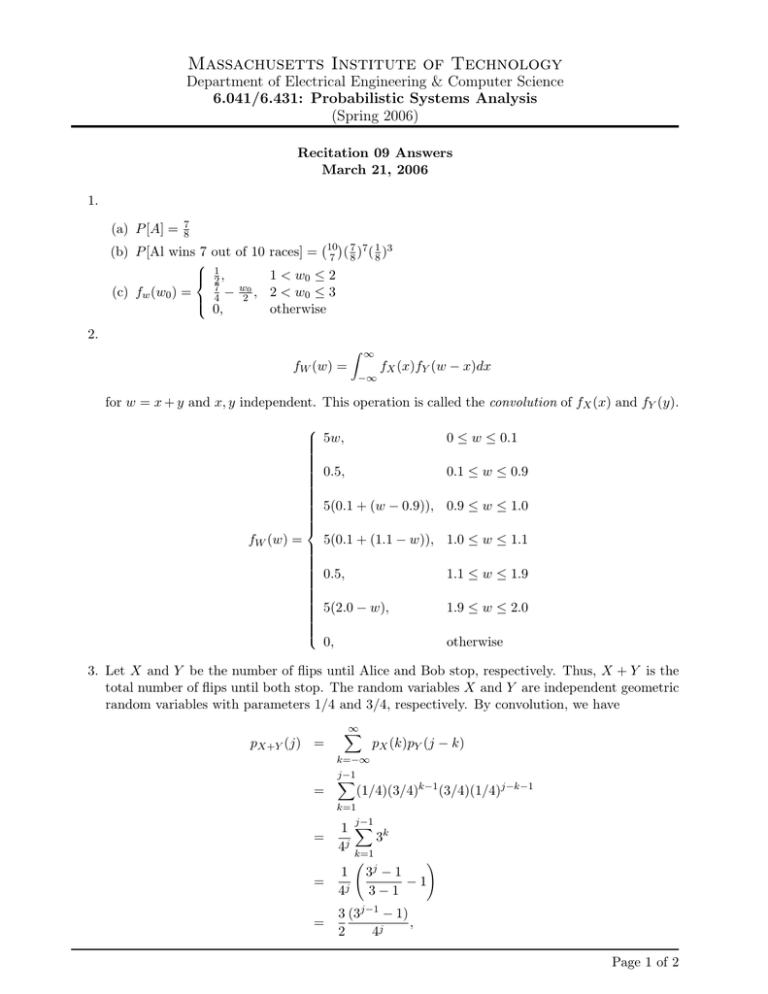
Massachusetts Institute of Technology Department of Electrical Engineering & Computer Science 6.041/6.431: Probabilistic Systems Analysis (Spring 2006) Recitation 09 Answers March 21, 2006 1. (a) P [A] = 7 8 (b) P [Al wins 7 out of 10 races] = (c) fw (w0 ) = 2. 1 2 , 7 4 0, − w0 2 , ¡10¢ 7 7 1 3 7 ( 8 ) ( 8 ) 1 < w0 ≤ 2 2 < w0 ≤ 3 otherwise fW (w) = Z ∞ fX (x)fY (w − x)dx −∞ for w = x + y and x, y independent. This operation is called the convolution of fX (x) and fY (y). fW (w) = 5w, 0.5, 5(0.1 + (w − 0.9)), 0 ≤ w ≤ 0.1 0.1 ≤ w ≤ 0.9 0.9 ≤ w ≤ 1.0 5(0.1 + (1.1 − w)), 1.0 ≤ w ≤ 1.1 0.5, 5(2.0 − w), 1.1 ≤ w ≤ 1.9 1.9 ≤ w ≤ 2.0 0, otherwise 3. Let X and Y be the number of flips until Alice and Bob stop, respectively. Thus, X + Y is the total number of flips until both stop. The random variables X and Y are independent geometric random variables with parameters 1/4 and 3/4, respectively. By convolution, we have pX+Y (j) = ∞ X pX (k)pY (j − k) k=−∞ = = j−1 X (1/4)(3/4)k−1 (3/4)(1/4)j−k−1 k=1 j−1 X 1 3k 4j k=1 Ã ! 3j − 1 −1 3−1 = 1 4j = 3 (3j−1 − 1) , 2 4j Page 1 of 2 Massachusetts Institute of Technology Department of Electrical Engineering & Computer Science 6.041/6.431: Probabilistic Systems Analysis (Spring 2006) if j ≥ 2, and 0 otherwise. (Even though X + Y is not geometric, it roughly behaves like one with parameter 3/4.) Page 2 of 2

